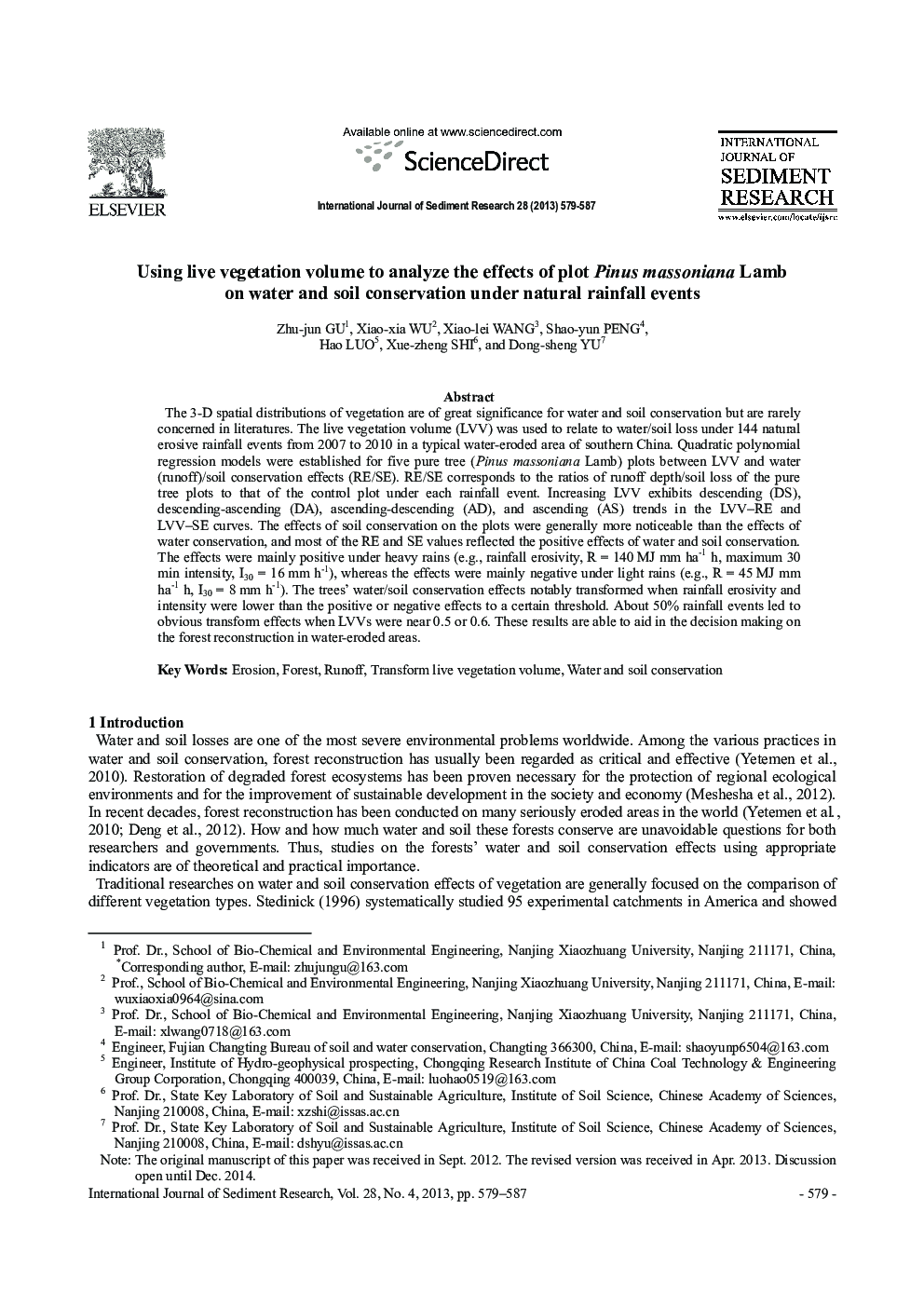| Article ID | Journal | Published Year | Pages | File Type |
|---|---|---|---|---|
| 4712507 | International Journal of Sediment Research | 2013 | 9 Pages |
The 3-D spatial distributions of vegetation are of great significance for water and soil conservation but are rarely concerned in literatures. The live vegetation volume (LVV) was used to relate to water/soil loss under 144 natural erosive rainfall events from 2007 to 2010 in a typical water-eroded area of southern China. Quadratic polynomial regression models were established for five pure tree (Pinus massoniana Lamb) plots between LVV and water (runoff)/soil conservation effects (RE/SE). RE/SE corresponds to the ratios of runoff depth/soil loss of the pure tree plots to that of the control plot under each rainfall event. Increasing LVV exhibits descending (DS), descending-ascending (DA), ascending-descending (AD), and ascending (AS) trends in the LVV–RE and LVV–SE curves. The effects of soil conservation on the plots were generally more noticeable than the effects of water conservation, and most of the RE and SE values reflected the positive effects of water and soil conservation. The effects were mainly positive under heavy rains (e.g., rainfall erosivity, R = 140 MJ mm ha−1 h, maximum 30 min intensity, I30 = 16 mm h−1), whereas the effects were mainly negative under light rains (e.g., R = 45 MJ mm ha−1 h, I30 = 8 mm h−1). The trees' water/soil conservation effects notably transformed when rainfall erosivity and intensity were lower than the positive or negative effects to a certain threshold. About 50% rainfall events led to obvious transform effects when LVVs were near 0.5 or 0.6. These results are able to aid in the decision making on the forest reconstruction in water-eroded areas.
